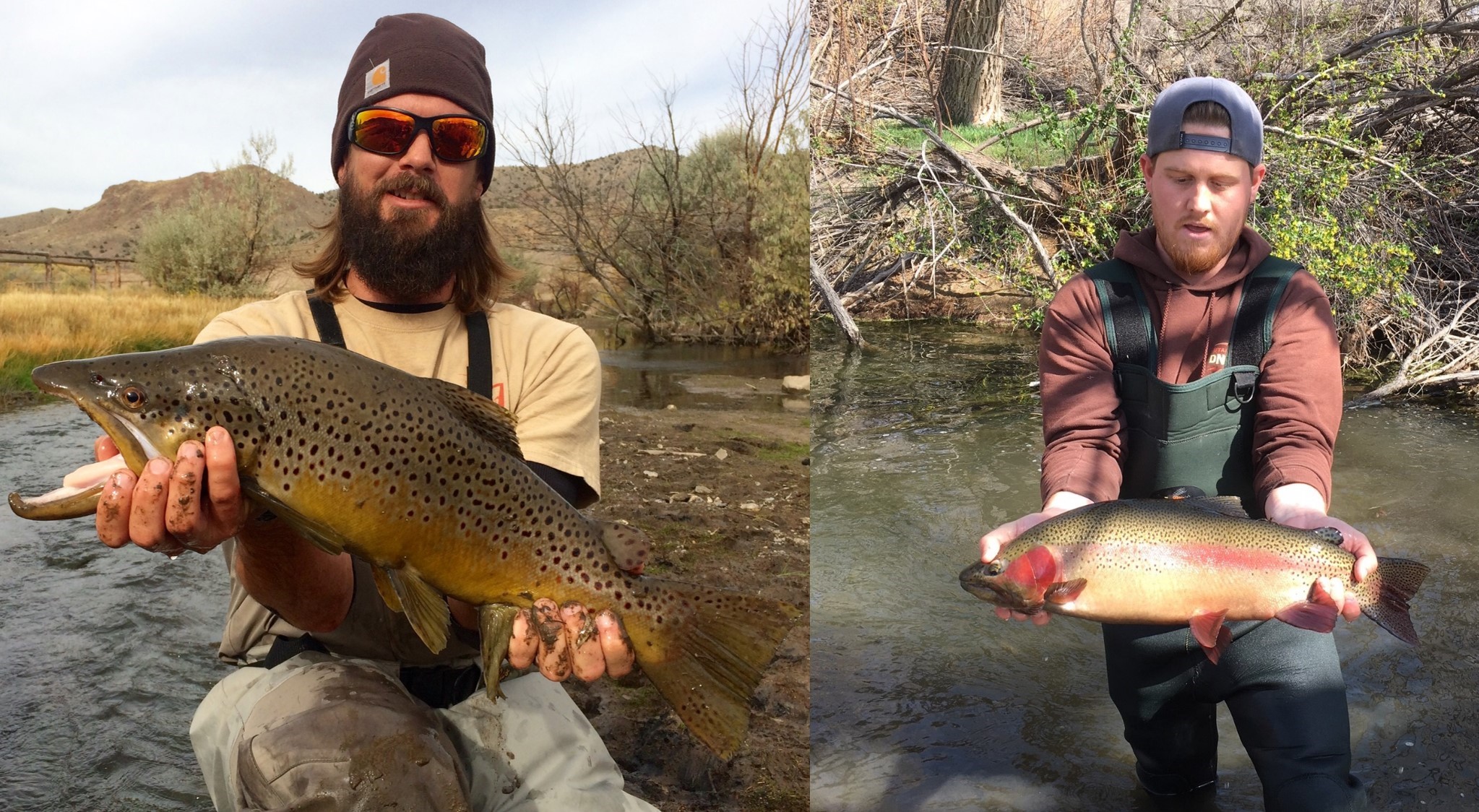
CEDAR CITY — Following years of intermittent habitat work, the lower Beaver River improvement project is nearing completion as workers prepare to tackle another 26 acres along the Southern Utah waterway.

Through a public-private partnership coordinated by Utah’s Watershed Restoration Initiative, the Utah Division of Wildlife Resources has partnered with Trout Unlimited, the U.S. Fish and Wildlife Service and the Natural Resources Conservation Service to secure funds for and carry out habitat restoration in the project’s latest phase.
Stan Gurley, habitat restoration biologist, said this phase will be focused on improvements to a half-mile of the river’s course between Minersville and its reservoir – picking up right where work stopped this year.
“The area directly associated with the stream had been invaded by non-native tree species, mainly Russian olive and tamarisk,” Gurley said. “We’ve already removed the trees, so this year (2022) is the actual stream work where we’re going to place logs and rocks to create that structure. We’re going to go in and plant native vegetation, and then we’re going to fence off the treatment area so it’s protected from livestock grazing.”
Similar projects are underway in Iron County’s Bear Valley and near the headwaters of the Santa Clara River atop Pine Valley Mountain, where invasive species or wildfires have accelerated erosion and made streams less habitable for fish.
Nic Braithwaite, fisheries biologist and project manager, said he was initially inspired to organize the project to improve conditions for fish and attract more anglers to the region.

“We felt like it had the potential to be a really good fishery,” Braithwaite said. “It’s already an OK fishery, and we felt like some habitat work could really improve it. The river through there is really degraded, especially in terms of sport fish habitat.”
Beaver River’s current state, especially in its lower course below Minersville Reservoir, has been shaped by flooding events dating back to the 1980s. The latest development occurred in 2019, when excess water released from the reservoir raced downstream and accelerated the riverbanks’ erosion.
Floods reshape the river bottom and its banks, leading to a more uniform and unnatural stream channel, Braithwaite said. In contrast, fish – particularly sport varieties like those found in Beaver River – prefer an aquatic habitat with a variety of depth, cover and streamflow.
“The stream work we’re doing will help address the erosion problem,” Braithwaite said. “We’re putting in structures to help protect those banks in the short term, and then it’s vegetation that will protect them in the long term. We’ll return to having different habitat types: we’ll have pools and runs and cover and everything. Right now it’s just kind of a long, shallow run without any cover.”

According to the project proposal, biologists plan to follow-up the removal of invasive species with heavy replanting. Using an array of plant species of varying heights, the goal is to establish thriving communities of cottonwoods, willows, goldenrod and other native trees and flowers.
The combined cost of treating the latest half-mile, including the 2021 vegetation removal and 2022 stream work, is about $125,000, Gurley said. He added that the contributions from collaborating agencies and private landowners were invaluable to funding the project.
Since 2014, the Bureau of Land Management and the Utah Division of Wildlife Resources have removed invasive species from about 175 acres and completed stream improvement work on about 2.5 miles of the lower Beaver River. This project would add another half-mile of stream improvement work, with just one or two remaining pockets of untreated river between the county fairground and Minersville Reservoir.
Ultimately, state officials hope the improvements will increase fish and wildlife populations, beautify the river and restore it to it a more natural state.
“We already get quite a bit of use from anglers and hunters,” Braithwaite said. “It’s been really valuable that we’ve got some landowners that have signed on to our walk-in access program, and the BLM has been doing some work to improve the roads and facilities. They’ve put in picnic tables and fire pits and they have plans for more facilities there. So going forward, it should be really nice.”
Photo Gallery
Before/after image showing improvements made to one bend in the river, Beaver County, Utah, date unspecified | Photo courtesy of Nic Braithwaite/Utah Division of Wildlife Resources, St. George News Parts of Beaver River are still overgrown with Russian olive and tamarisk trees, Beaver County, Utah, date unspecified | Photo courtesy of Nic Braithwaite/Utah Division of Wildlife Resources, St. George News Workers with the Utah Conservation Corps clear and treat tamarisk shoots in an earlier phase of the project, Beaver County, Utah, date unspecified | Photo courtesy of Nic Braithwaite/Utah Division of Wildlife Resources, St. George News After clearing out invasive species crowding the riverbank, workers planted native willow stakes to fortify the bank and provide shade, Beaver County, Utah, date unspecified | Photo courtesy of Nic Braithwaite/Utah Division of Wildlife Resources, St. George News Seen from a nearby road, many Russian Olives and tamarisk trees have already been removed to make way for more beneficial native species, Beaver County, Utah, date unspecified | Photo courtesy of Nic Braithwaite/Utah Division of Wildlife Resources, St. George News Beaver River is home to several introduced sport fish species like the brown trout and rainbow trout pictured above, Beaver County, Utah, date unspecified | Photo courtesy of Nic Braithwaite/Utah Division of Wildlife Resources, St. George News One stretch of Beaver River showing the typical channeling and high banks that the project aims to address, Beaver County, Utah, date unspecified | Photo courtesy of Nic Braithwaite/Utah Division of Wildlife Resources, St. George News






Copyright St. George News, SaintGeorgeUtah.com LLC, 2021, all rights reserved.

